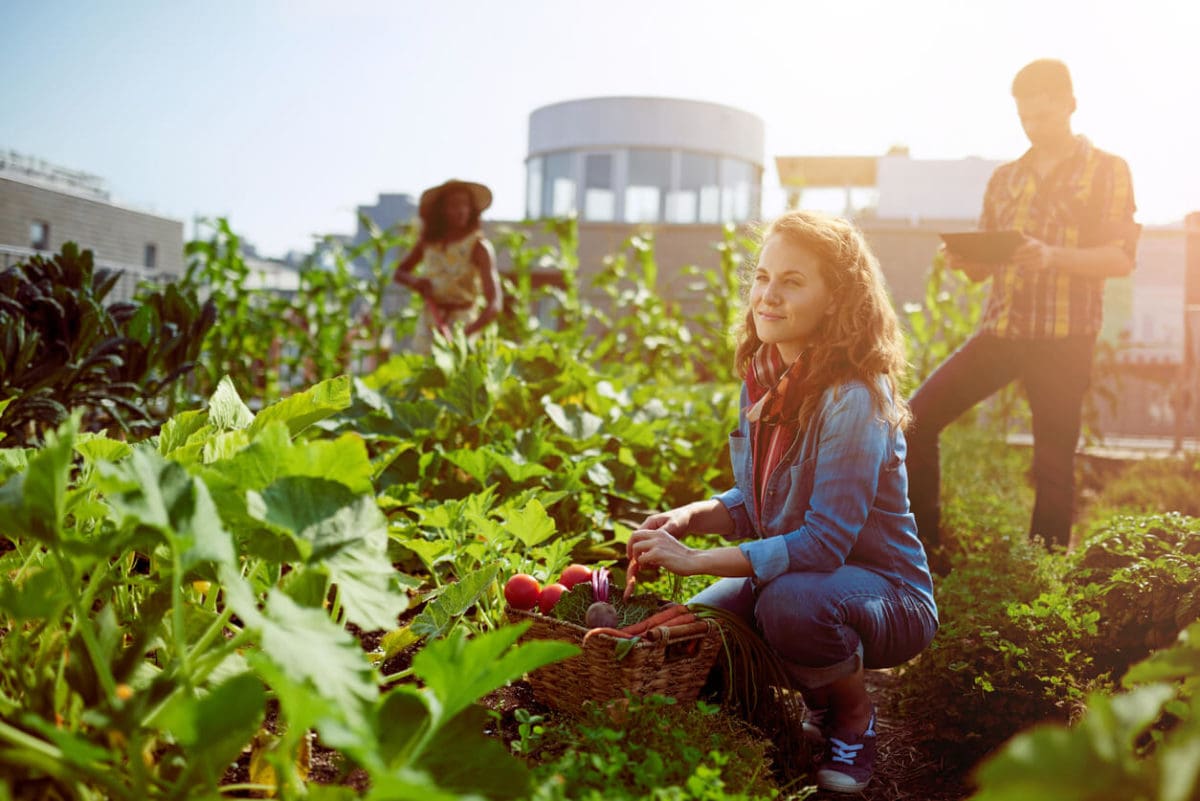Community Agriculture: Growing Together, Harvesting Happiness

What on Earth is Community Agriculture Anyway?
So, you've heard the term "community agriculture" tossed around, maybe at a farmer's market or overheard in a particularly crunchy conversation. But what exactly *is* it? Is it some kind of secret society for kale enthusiasts? (Spoiler alert: it's way cooler than that.) Community agriculture, in its simplest form, is when a group of people—neighbors, friends, a whole town—collaborate to grow and share food. It's like a potluck, but instead of casseroles, you're bringing homegrown tomatoes and bragging rights.
Why Get Your Hands Dirty? The Perks of Community Agriculture
Now, you might be thinking, "Sounds like a lot of work." And you'd be right. It *is* work. But the rewards? Oh, the rewards are bountiful, my friends. Think:
- Fresher-than-fresh food: You're eating veggies that have practically jumped from the soil to your plate.
- Community building: Sharing the harvest builds bonds stronger than any casserole. It's a great way to meet your neighbors and feel connected to your community.
- Environmental benefits: Community agriculture often emphasizes sustainable practices, reducing your carbon footprint and promoting biodiversity. You're not just growing food; you're growing a better future!
- Learning opportunities: From composting to pest control, you'll gain valuable skills and knowledge.
- Food security: It's a fantastic way to ensure your community has access to healthy, affordable food, particularly in food deserts.
Different Flavors of Community Agriculture: A Tasty Variety
Community agriculture isn't a one-size-fits-all kind of thing. There are as many variations as there are types of squash. Some popular models include:
- Community gardens: Plots of land are divided among community members who grow their own food. Think of it as a shared vegetable patch, with plenty of opportunities for friendly competition (and maybe some friendly borrowing of tools).
- Community supported agriculture (CSA): Members invest in a farm and receive a share of the harvest throughout the growing season. It's like a subscription box, but instead of socks, you're getting fresh, seasonal produce.
- Urban farms: These farms bring food production to cities, often utilizing rooftops, vacant lots, or other underutilized spaces. It's like bringing the countryside to the concrete jungle.
- School gardens: Engaging students in gardening teaches them about food systems, environmental responsibility, and the satisfaction of growing their own grub. It's a lesson in life, one carrot at a time.
Getting Your Hands Dirty: How to Join the Community Agriculture Movement
Ready to ditch the supermarket and embrace the dirt? Awesome! Here's how you can get involved in your community's agriculture scene:
- Search online: Use search engines to find community gardens or CSAs in your area.
- Check your local government's website: Many cities and towns have programs supporting community agriculture initiatives.
- Contact local farmers' markets: Vendors often know about community garden initiatives or other opportunities.
- Volunteer: Even if you don't have your own plot, volunteering at a community garden is a fantastic way to contribute and learn.
- Start your own! If there's nothing in your area, consider rallying your neighbors to create a community garden. Think big! Think community!
Community Agriculture: A Seed of Change
Community agriculture is more than just growing food; it's about cultivating connection, promoting sustainability, and building stronger, more resilient communities. It's about getting your hands dirty, sharing the bounty, and realizing that the best things in life are often grown, not bought. It's a movement that's gaining momentum and, frankly, is pretty darn awesome. So, grab a trowel, get your hands dirty and let's grow something amazing together! This is the future of food, and it's delicious.
Community Agriculture: Addressing Common Concerns
Let's tackle some frequently asked questions about community agriculture. You've got questions; I've got answers (mostly).
Q: I don't have a green thumb. Can I still participate?
Absolutely! Community agriculture thrives on collaboration. Even if you're not an expert gardener, you can still contribute by volunteering, helping with maintenance, or simply enjoying the fruits (and veggies) of everyone's labor. Remember, it's the community aspect that truly makes this work.
Q: What if I don't have much time?
Many community agriculture initiatives offer various levels of involvement. You can choose to participate as much or as little as your schedule allows. Even a few hours a month can make a big difference.
Q: How much does it cost to participate?
The cost varies depending on the initiative. Some community gardens might charge a small fee for plot rental, while CSAs involve a seasonal investment. However, many options are free or low-cost, focusing on community building and access to fresh food. Many community gardens are free or have a low cost!
Q: What if the weather is bad, or pests attack my plants?
The beauty of community agriculture is the shared experience, so you aren't alone! Most community gardens and CSAs have experienced gardeners ready to offer support and guidance. And sometimes, a little bit of bad weather only builds character (and more delicious food).
Q: How can I find a community agriculture project near me?
Start by searching online using keywords like "community gardens near me," "CSAs near me," or "urban farms near me." You can also check your local government's website or contact local farmers' markets for information.